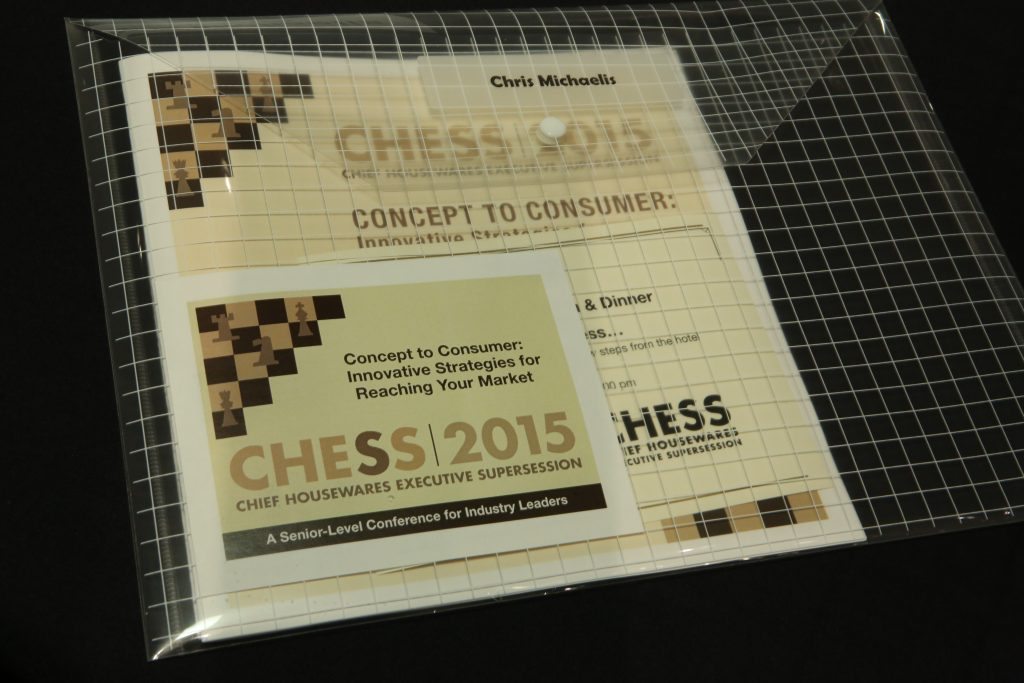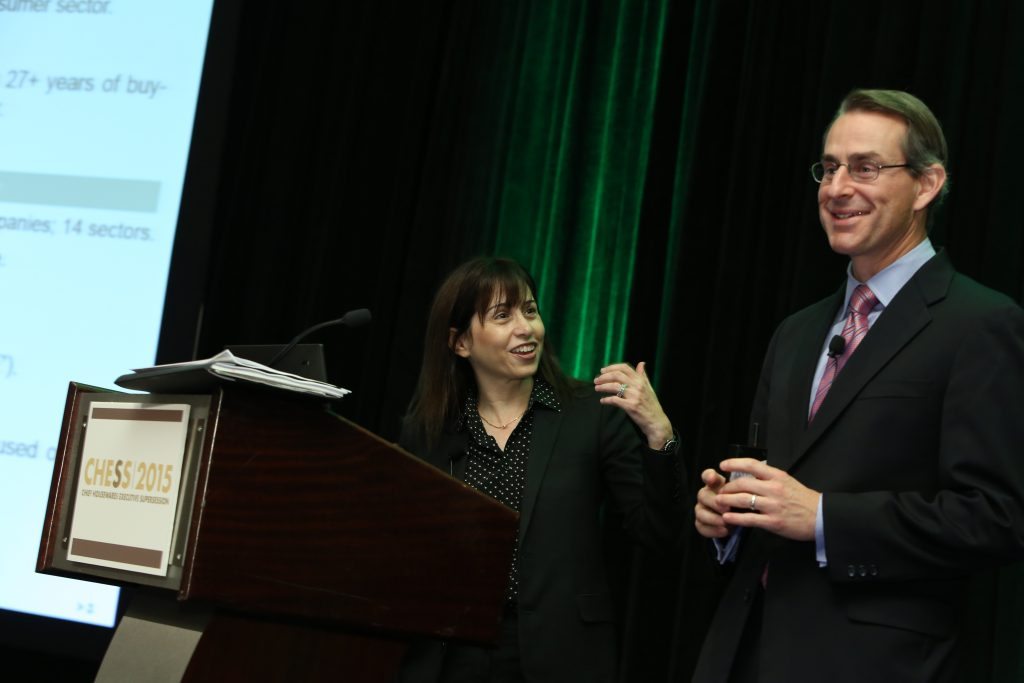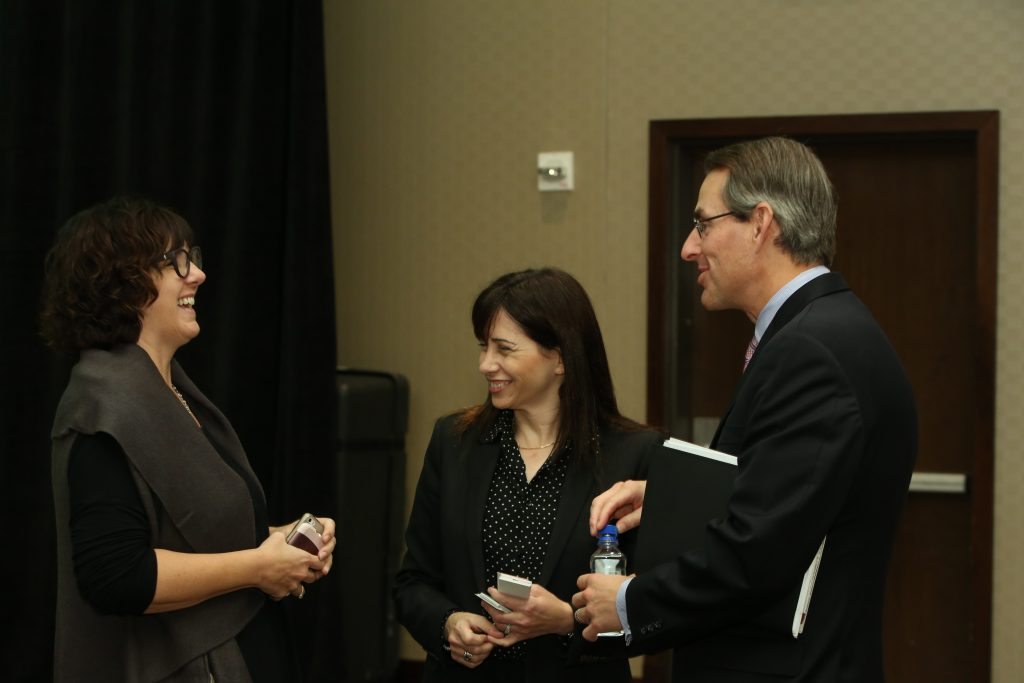 By Vicki Matranga, Design Programs Coordinator
By Vicki Matranga, Design Programs Coordinator
Dana Telsey, Retail Analyst, CEO and Chief Research Officer, Telsey Advisory Group (TAG)
Joe Feldman, Senior Managing Director, Telsey Advisory Group (TAG)
The second day of CHESS kicked off with a bird’s eye view of the retail environment, guided by Dana Telsey and Joe Feldman of the Telsey Advisory Group (TAG). Based in New York, TAG is a leading research, trading, banking and consulting brokerage firm focused on the consumer sector. With their “feet on the street and eyes on the screen,” Telsey and Feldman know the “bricks and clicks” retail landscape.
Telsey and Feldman outlined their cautious optimism for the macroeconomic climate. Consumer confidence holds steady, although people are spending time and dollars differently than in the past. Business is improving. Home sales are in low single-digit growth with home prices increasing. We have lower unemployment and controlled inflationary pressures. Home goods sales are rebounding and home prices are going up. Consumers feel wealthier and spend more. Mortgage rates have stayed down, keeping people in the market. Credit is still tight and home improvement investment continues.
Key factors in household formation: Millennials are still not buying homes but starting to rent, resulting in incremental home goods spending growth. New household formation is on the rise.
Retail industry trends—Mobile and Millennials. Growth in ecommerce and mcommerce are disrupting market share. Retailers are learning how to attract attention and dollars for this 25 percent of the population. Mobile shopping growth is expected to capture an increasing percentage of U.S. retail commerce annually.
Telsey and Feldman then dug into the details and offered many examples of retailers that are building creative new approaches. They identified category leaders, ranked successes and identified areas for stores that need attention. The speakers mentioned some recent management changes at several key retailers and what to expect from new leadership. They also discussed mall operators and how real estate allocations are changing.

Bricks and Clicks
New technologies are changing consumer shopper behavior and retailers must learn how to use all the data they are collecting. Telsey and Feldman gave examples of retailers creating exciting shopping experiences in high-end kitchen and bath, along with food, festivals and concerts to attract shoppers.
Ecommerce is an invisible threat—retailers may not know who their competitors are and face pressures from various online retailers. Technology is changing the way retailing is done as more stores offer online buying with instore pick up and return. This symbiotic relationship requires inventory support that is complex to do and easy to say. Crowdsourcing delivery is moving into a new direction, with individuals driving to deliver purchases to homes. International retailers, such as U.K.-based Primark, are also establishing a foothold in the U.S.
Ecommerce is now 9 percent of sales and growing, 60 percent of consumers do their research before coming to a store. Both channels work together. The apparel category needs physical presence, as shoppers want to try on clothes and glasses. Retailers develop online and in-person relationships with their shoppers to make it easy to buy several and send return some choices on site. Categories with low shipping costs will be most successful.
Telsey and Feldman interpreted multichannel distribution potential by sector, noting discounters and department stores that are gaining share and expanding their customer base as they get to know their Millennial customers better. Fashion brands continue to expand to home goods. As the home improvement sector grows, retailers such as Home Depot and Lowes are growing same store sales.

Forecasts
Favorable catalysts for the retail industry outlook: tightening labor market, rising wages, lower gas prices, higher consumer confidence. The lower gas prices indicate that consumers are reducing debt or adding to savings, little effect in growing sales.
Risks: In the longer term: declining home ownership rates, rising interest rates, Affordable Care Act.
The broad retail outlook shows that retailers are generally in strong financial positions, with lean cost structures from expense reductions and they hold higher cash balances.
Telsey and Feldman took some detailed questions on costs related to online sales, particularly shipping and delivery methods, ecommerce in the grocery sector, the future of TV shopping and how to develop multichannel loyalty programs. On the purchasing behaviors of Millennials, TAG watches Pinterest and Instagram and notes Millennials’ maturing attitudes toward wealth accumulation, family formation and preferences for experiences over products.
Audience members also asked specific questions about policies and future plans of some major retailers. The lively conversation revealed that CHESS attendees value the access to such top experts who have timely and detailed information on the market.
Telsey Advisory Group (TAG) offers research reports and a daily newsletter. For further information about TAG’s services, see www.telseygroup.com

See the full conference program here:


